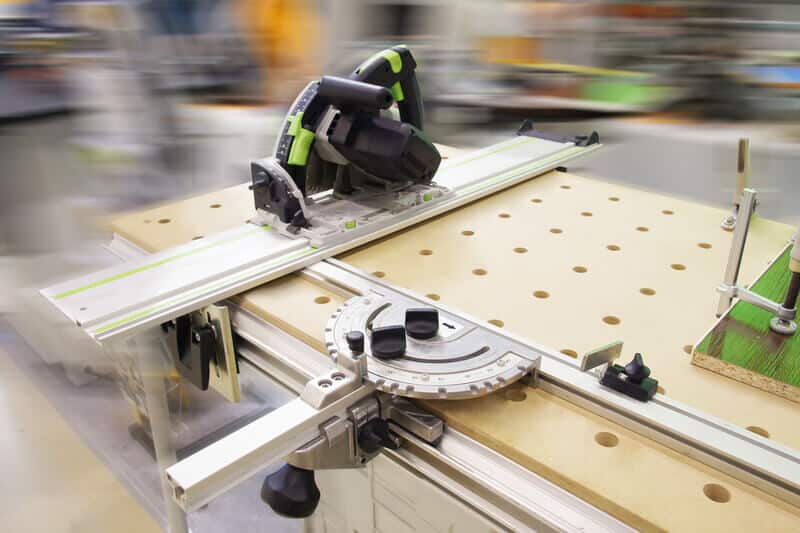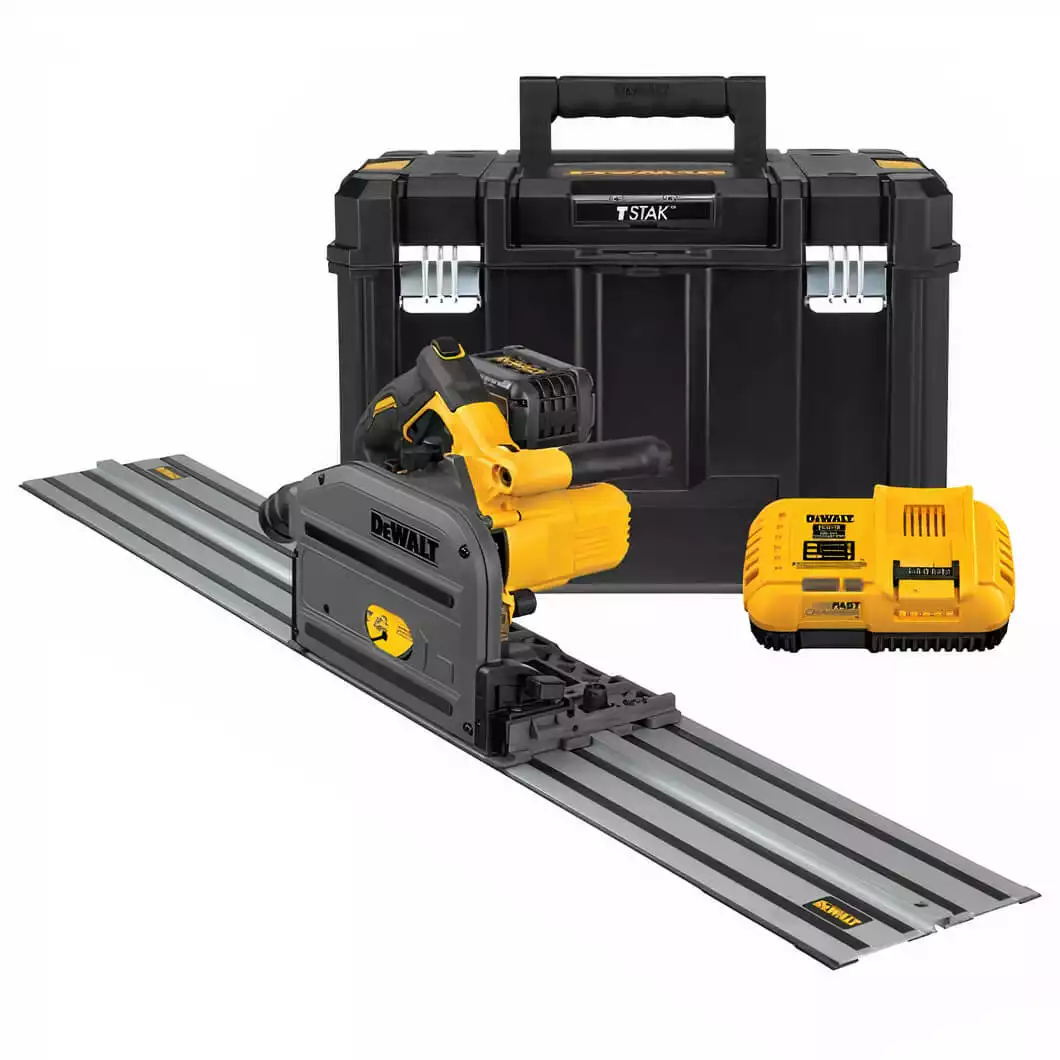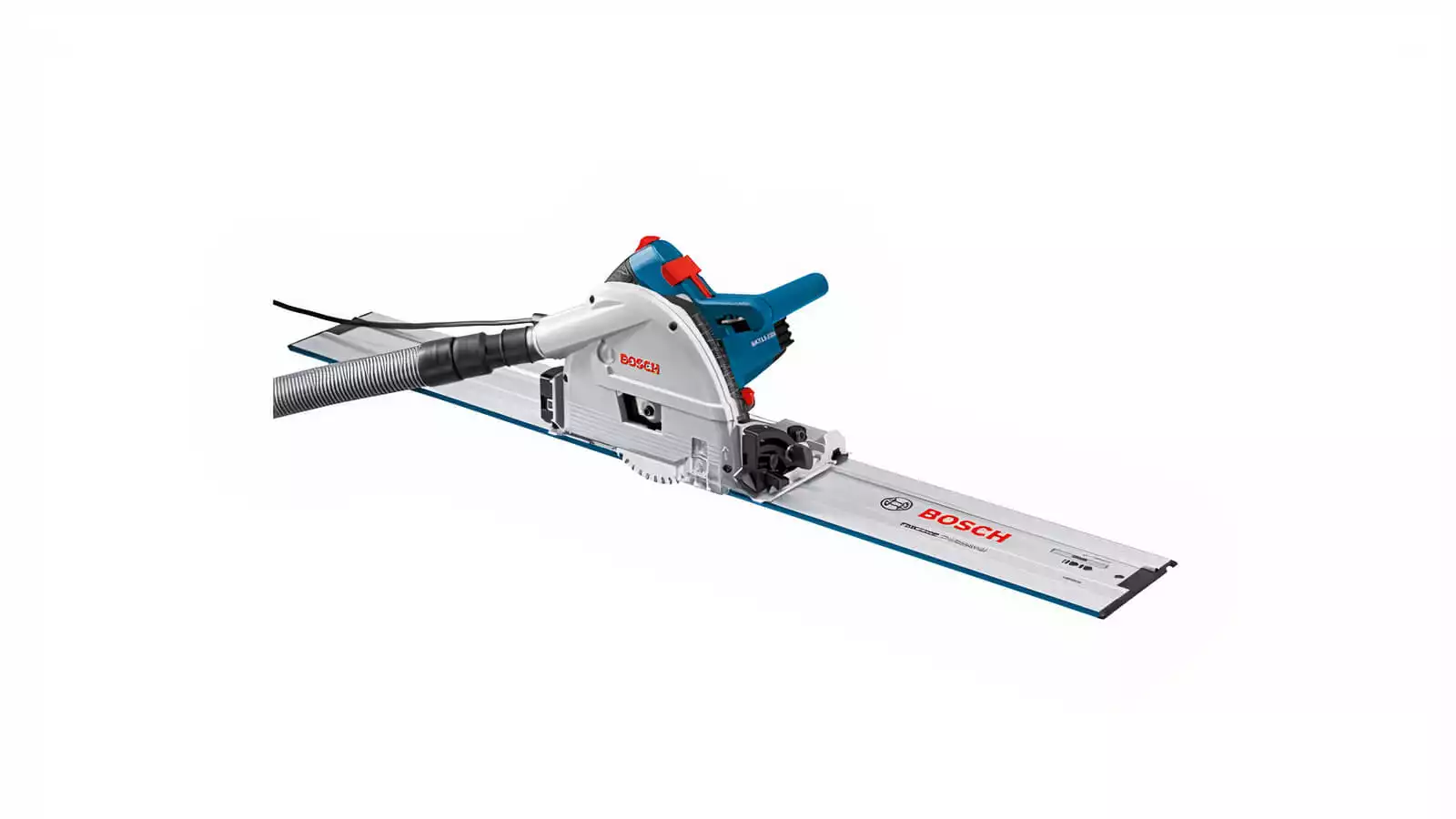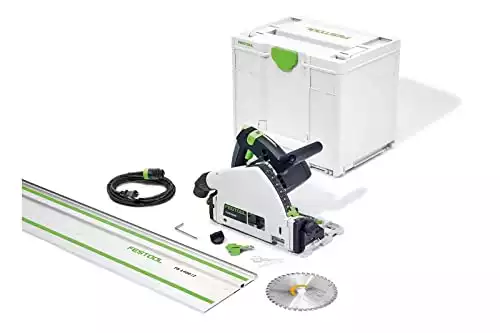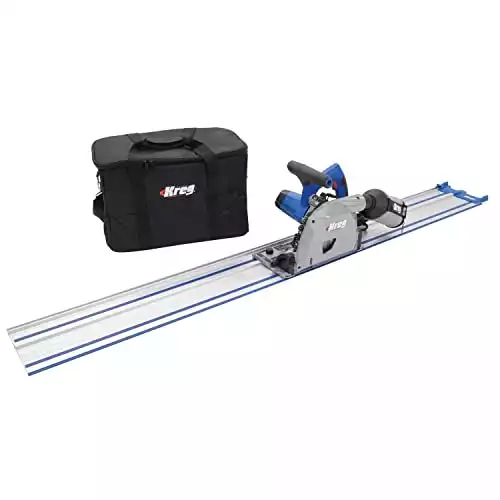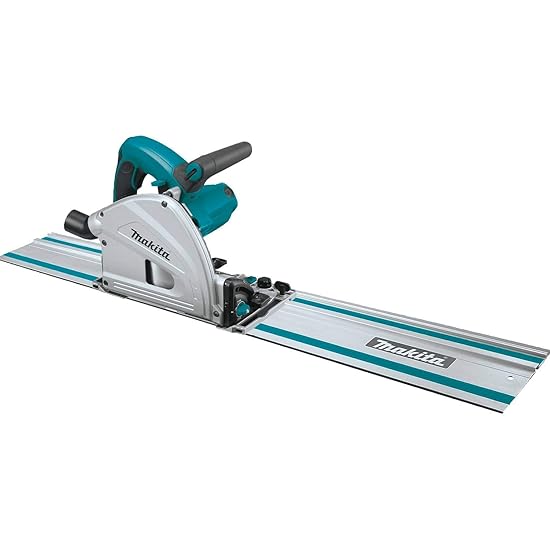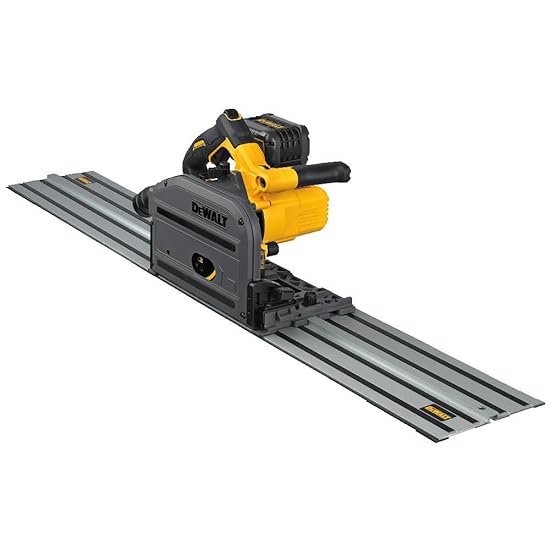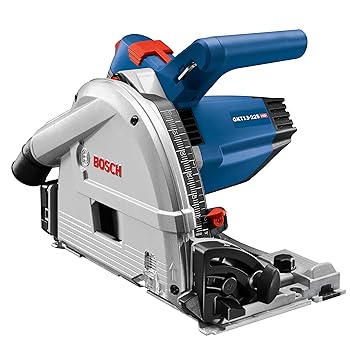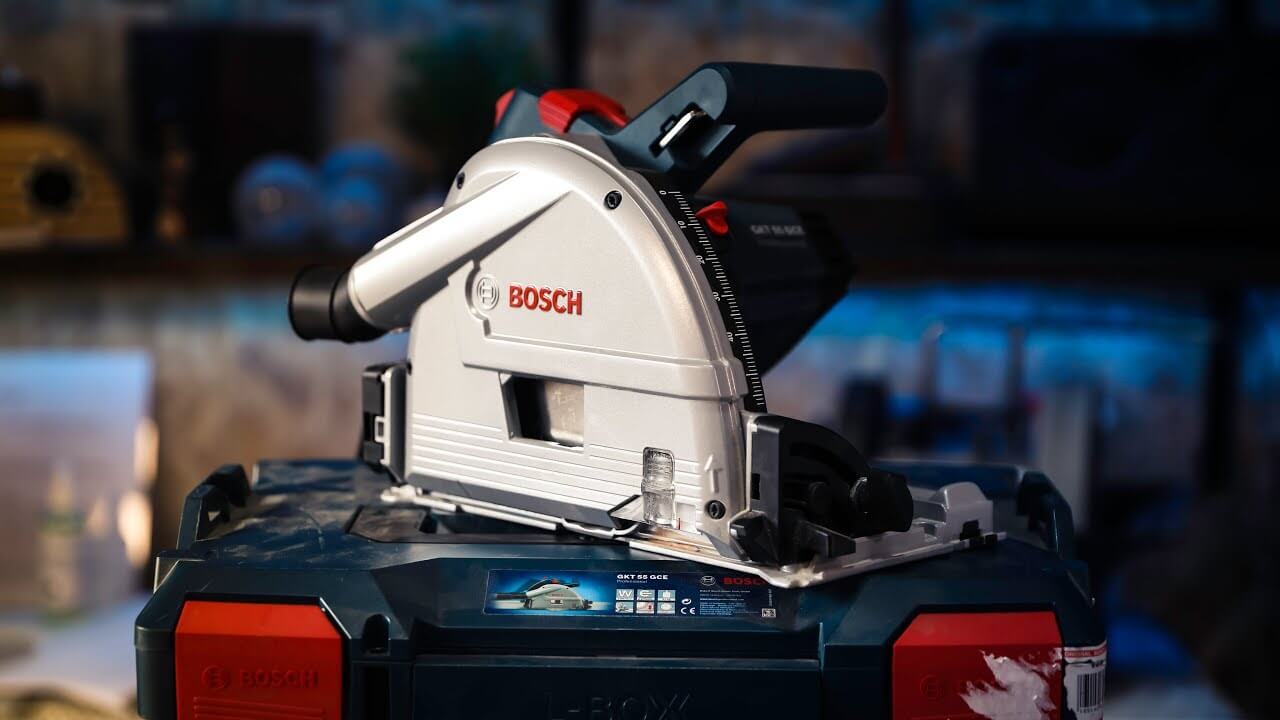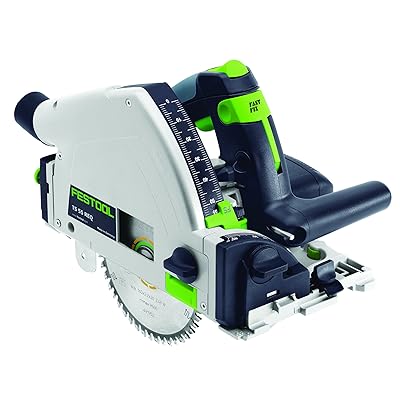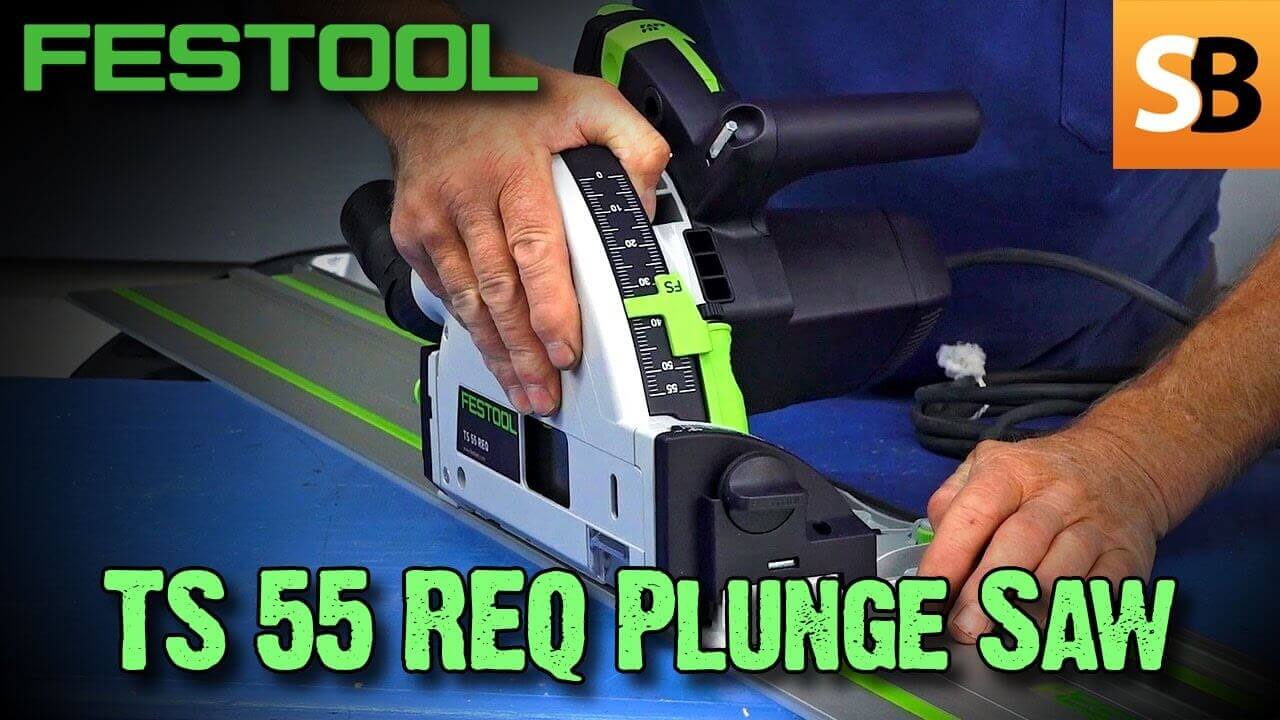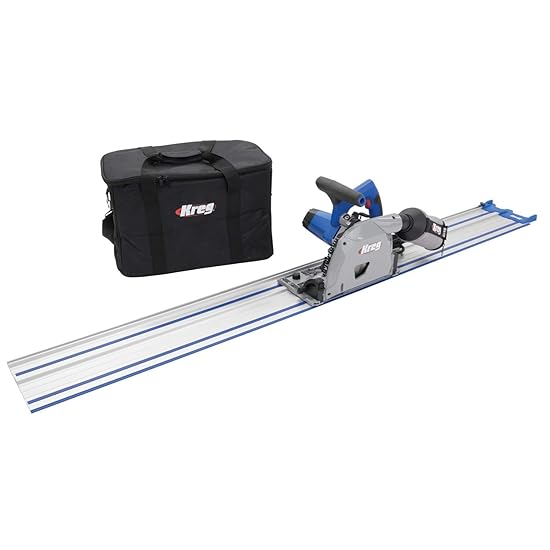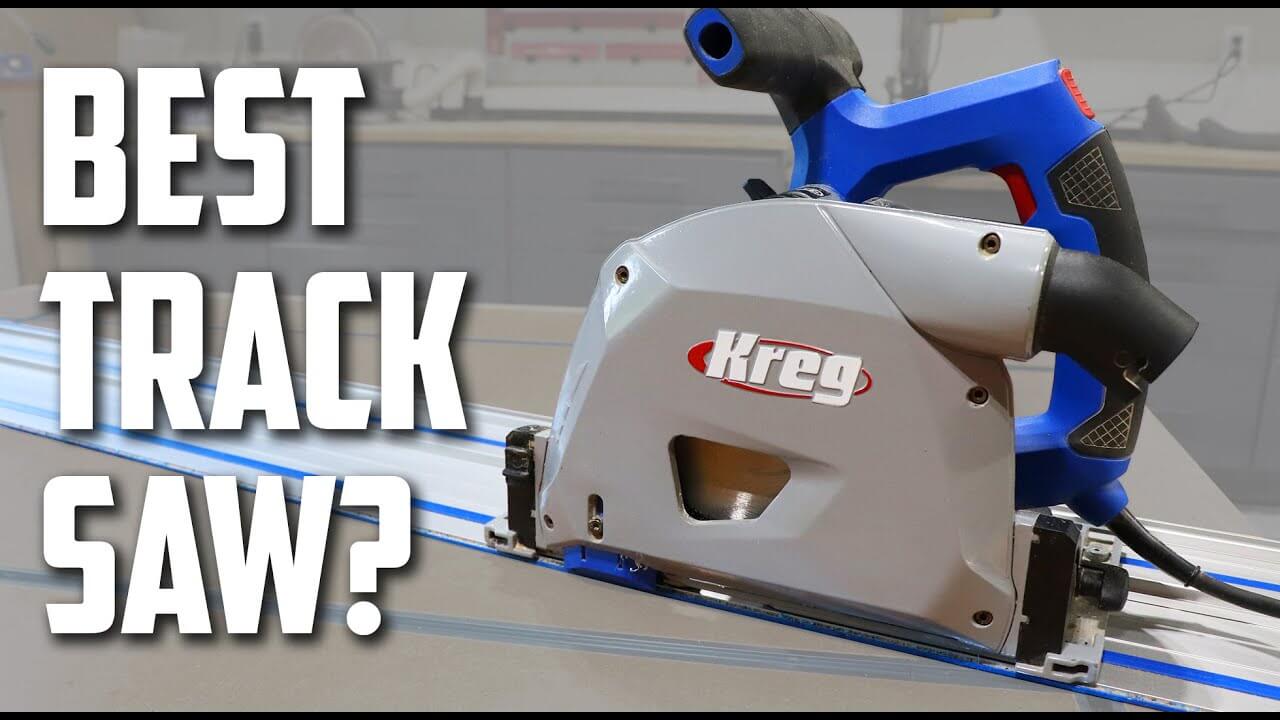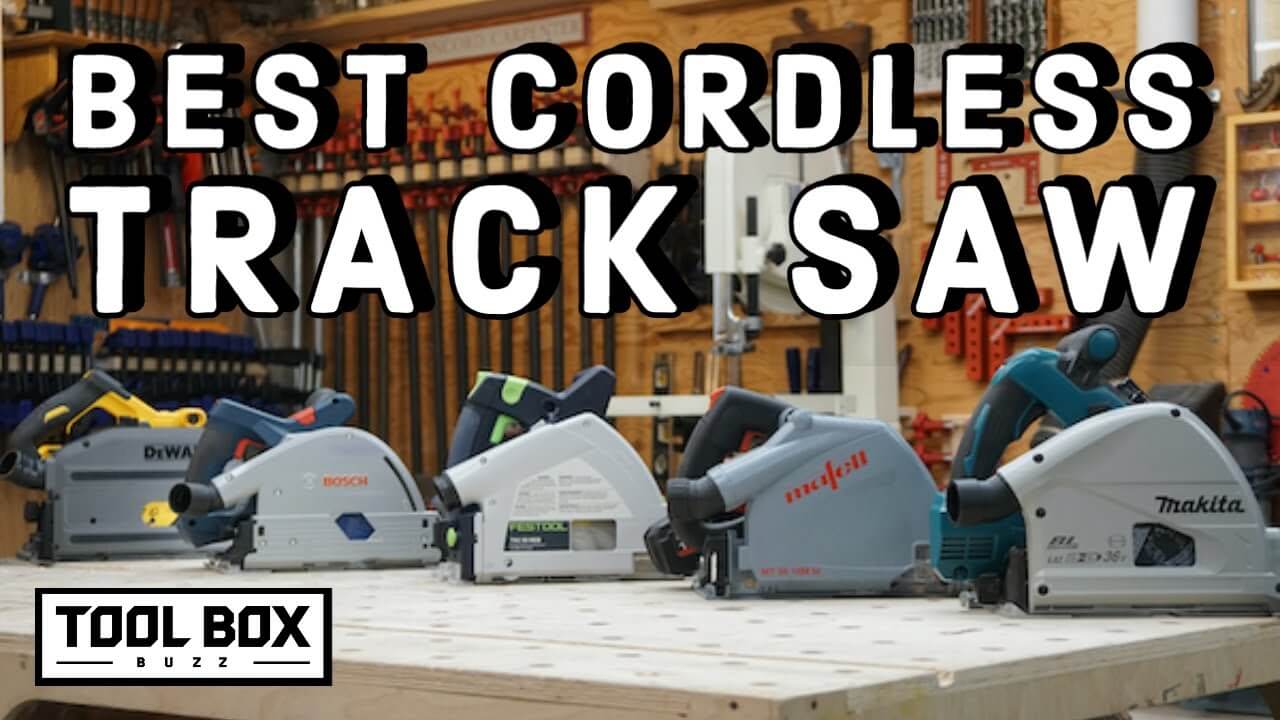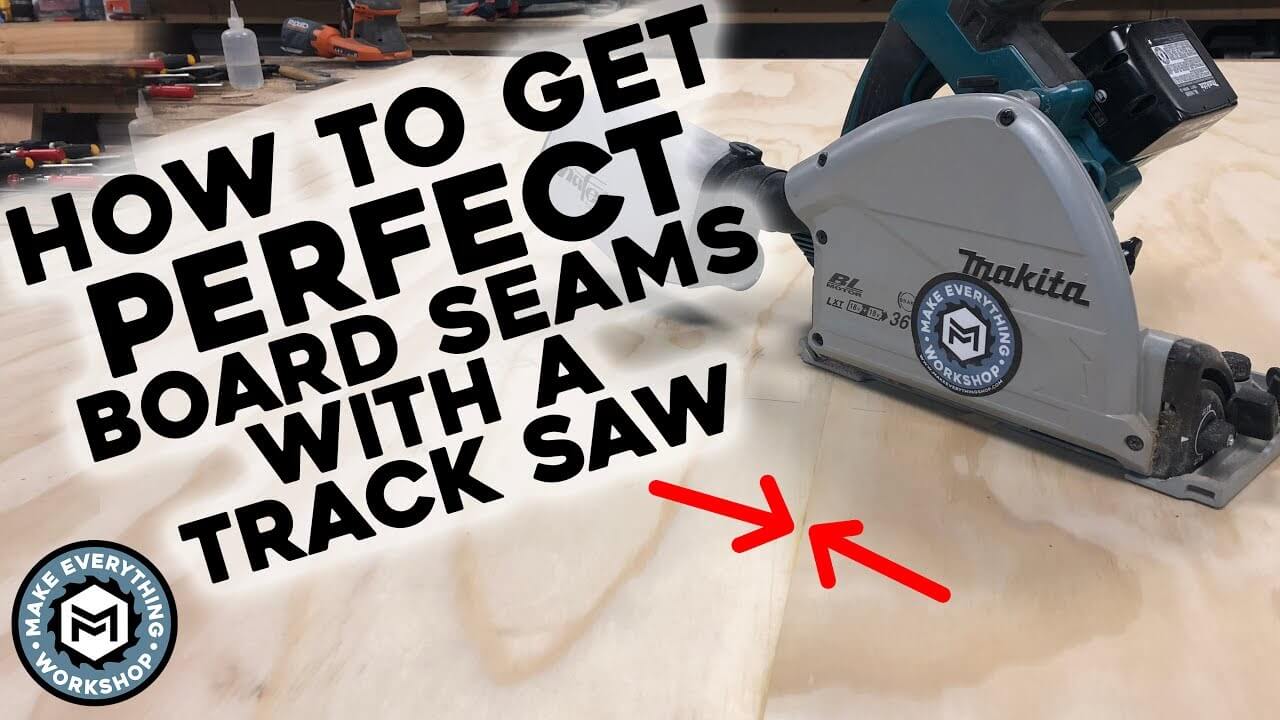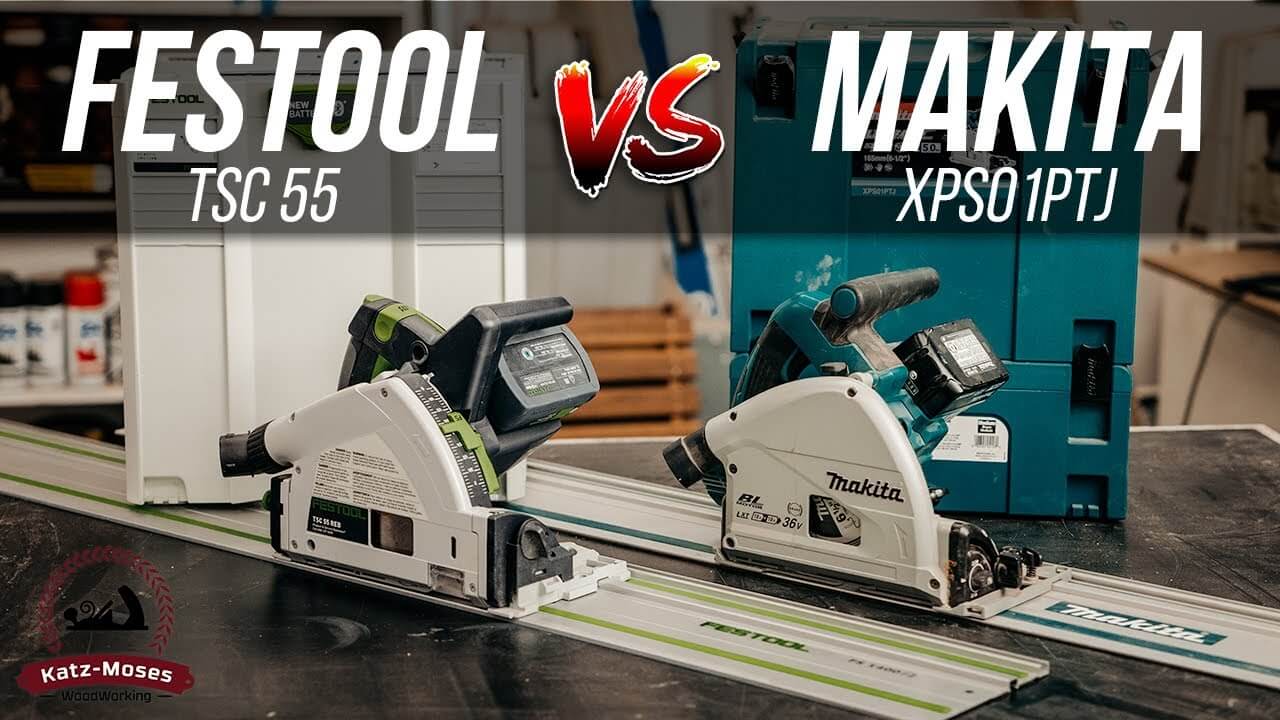Best Track Saw for the Money
You probably know all about man-handling track saws and how beneficial they are in terms of streamlining time-consuming tasks around the workshop.
Hence the reason you’re here today hunting for the best track saw.
Below, you’ll find track saw reviews detailing the pros and cons, but mostly the benefits, of some of the best track saws for woodworking.
From Makita to Festool to Bosch, they’re all right here. We cover 5 of the best saws on the market, analyzing three key determining factors based on build quality, performance, and price.
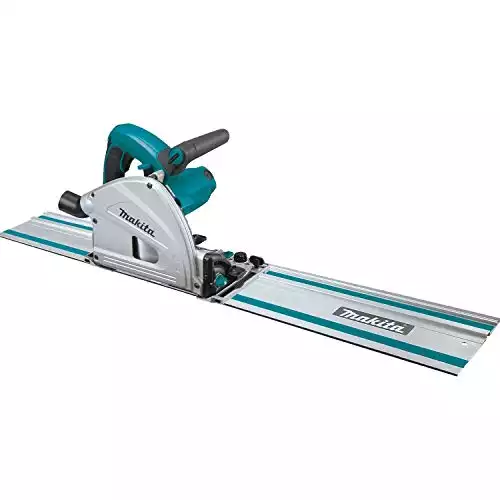 Makita SP6000J1 6-1/2" Plunge Circular Saw Kit
Makita SP6000J1 6-1/2" Plunge Circular Saw Kit
- Super deep cutting capacity allows you to reach larger cutting depths of 2-3/16" at 90 degrees and 1-9/16.
- Equipped with Makita's 12 amp motor churning out 2,000 or 5,200 rpm via its variable speed control drive.
- An extremely accurate track saw delivering precise straight-line cuts with a splinter-free smooth mirror finish.
- A comfortable rubberized grip provides desirable ergonomic comforts to minimize hand fatigue for extended use.
Comparison Chart
- Bevel capacity ranges from -1° to 48°
- Easy-to-set cutting depth adjustment
- Soft-start motor protection for vitality
- Corded performance with FlexVolt tech
- Zero clearance system for straight cuts
- DeWalt's powerful 60v brushless motor
- Precise plunge function deeper cuts
- Fast three-step blade change system
- Vacuum grade dust extraction system
- Spring-loaded riving knife mechanism
- 55" track for quality splinter-free cuts
- Engineered with a triple-bearing motor
- Robust 12-amp motor for fast cutting
- Quality anodized aluminum guide rail
- Blade-left design ideal right handers
Best Track Saw Reviews
Here are our top five picks for the best track saws available, including all your favorite brands, like Festool, Kreg, and Bosch.
1. Makita SP6000J1 6-1/2″ Plunge Track Saw Kit
Makita, like Festool and all the rest, has a reputation for creating one of the best track saws, and their SP6000J1 saw kit model is no exception.
Track Saw Review
The SP6000J1 optional but advantageous 55″ guide rail system comes from robust anodized aluminum. Plus, its maximum speed 12 amp motor has electric variable speed control. At 2,000 or 5,200 rpm, you can maintain the best speed for a smooth, precise cut.
The best part of the Makita SP6000J1 track saw is its portability. Although the Makita SP6000J1 can cut plenty of heavy materials, it works best for cutting large wood panels.
The Makita SP6000J1 has a large cutting capacity (2-3/16″ at 90 degrees and 1-9/16″ at 45 degrees) and a good bevel capacity (-1 to 48 degrees, with positive stops at 22 5 and 45 degrees). The plunge release level is also in an easy-to-reach place for better operator comfort.
PROS
CONS
2. DEWALT DCS520ST1 6-1/2″ Track Saw Kit
As any good track saw should, the Dewalt DCS520ST1 saw kit makes a splinter-free, precise cut.
Track Saw Review
Luckily, a spring-loaded riving knife and anti-kickback mechanism prevent kickback, and a straight plunge mechanism makes it easier to use. At a 90-degree angle, it can cut 2-1/8″ and 1-5/8″ at 45 degrees. For easier cleanup, it has a universal 1-1/4″ dust port.
This track saw comes with a 60V battery. A Dewalt fast charger can help make the motor move from 2,000 to 5,500 rpm fast.
Some customers recommend adding a 9.0 AH battery to increase speed and cutting power for heavier projects. Nonetheless, the 6-1/2 inch saw blade should help do the trick.
PROS
CONS
3. Bosch GKT13-225L 6-1/2″ Plunge Track Saw Kit
The Bosch GKT13-225L saw kit, comparable to a Festool, combines the best plunge action track saw features. Its speed is fast, and it’s easy to set up. It works well in wood-based sheets, mainly plywood and laminated particle boards.
Track Saw Review
The Bosch GKT13-225L achieves its precise plunge cuts with an easy-to-use plunge mechanism. A three-blade change system allows you to swap out a new blade easily.
You can adjust the guiding track (sold separately) to make bevel cuts. It can also maintain speed under demanding projects. Cleanup is also easy since you can connect it to a suitable vacuum cleaner for dust collection.
If you need a lot of power, this model has overload protection against overheating. A standard 6 1/2-inch blade comes with the model, along with a bevel capacity of -1 to 48 degrees.
PROS
CONS
4. Festool TS 55 REQ Plunge Cut Track Saw Kit
The Festool TS 55 REQ saw kit comes with an impressive 55″ track and includes the track guide for precise cuts.
Track Saw Review
Luckily, the Festool track guide and the saw itself stay firmly in place. Plus, the plunge cut design and riving knife automatically retract the blade into a full-cover blade guard when not in use. Dust cleanup is easy too.
The Festool track has a nifty zero-clearance strip on the blade side. It deliberately comes oversize so that you can cut it right to the edge of the saw blade.
Whether the bevel angle is 45 degrees or 90 degrees, the cut line will still line with the guide rail’s strip. All in all, the Festool TS 55 REQ saw comes with some of the best features.
PROS
CONS
5. Kreg ACS2000 Adaptive Cutting Track Saw Kit
The Kreg ACS2000 saw kit is one of the most adaptable track saws on this list, able to cut up to 2-1 8″ deep at 90 degrees and 1 1 2″ at 45 degrees.
Its 6-1/2 inch blade can cut through many kinds of wood, including plywood, hardwoods, and solid boards. You can use this model by itself or pair it with the Project Table Kit for extra perks.
Safety-wise, the Kreg model comes with a riving knife, among other anti-kickback tools. Also, as usual, it can make a splinter-free cut in wood pieces up to 50″ long, using a 000 rpm- 5 200 rpm 12-amp motor with an electronic brake.
PROS
CONS
Best Track Saw Buyer’s Guide
If you’ve gone through our list and still don’t know if a Festool or Bosch saw will cut it, see if any of these comparisons can answer any questions.
Table Saw vs Circular Saw
The most significant difference between a table saw and a circular saw is how you cut the material.
A circular saw, for instance, moves the saw blade through the material. A table saw stays still while you move the material through the blade. Either one can cut at a 90-degree or 45-degree angle. You just have to consider your projects and how often you’ll work with your saw.
A table saw works best for cutting angles or repeatable cuts. It works great when you’re working with smaller material pieces since the saw can stay still, and you only have to move the material.
A table saw can cut longer material pieces, but you’re going to need more workshop space for such projects. You’ll also need another person to hold longer pieces still as you push the material through the saw. For people who work with wood regularly, it might be a good choice.
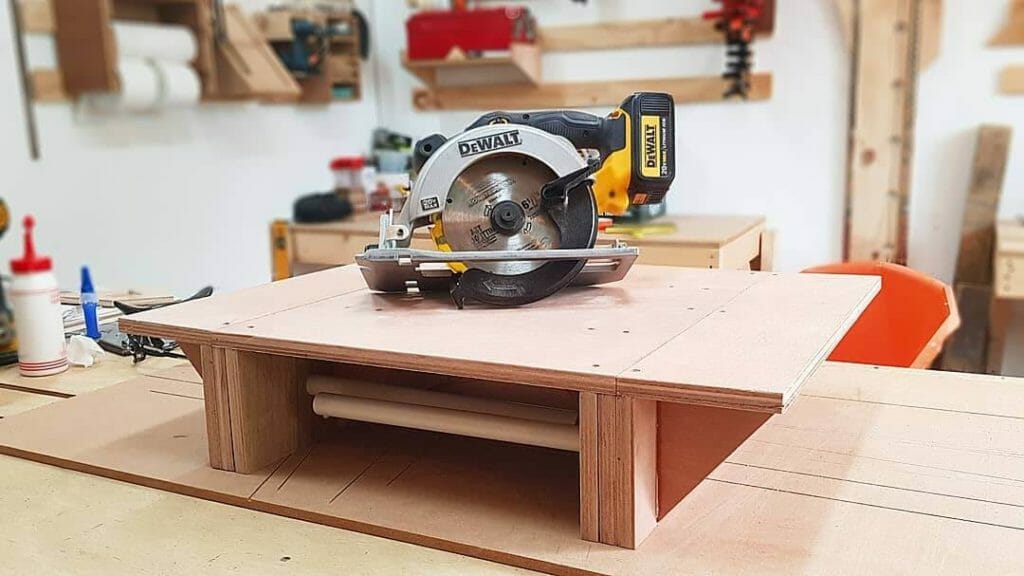
Table Saw Pros
Table Saw Cons
A circular saw is much better for cutting longer material pieces. It also doesn’t take up a lot of space, even with a guide rail, so it’s great for those with limited space. You could stow it in a closet when you’re not using it.
However, for repeated cuts, it does take longer to set up. A circular saw is also suitable for hobbyist woodworkers or those who just use it infrequently. For beginning woodworkers, starting with a circular saw, a guide rail, and some saw horses might be best.
If you find yourself limited with that particular tool, and you have the space to add a table saw, you can graduate to one.
Track Saw vs Table Saw
One hard truth about track saws and table saws is that their strengths sometimes overlap. Both feature a powerful, fast circular blade that helps the saws perform similarly.
Track saws, for one, are great at making cuts in longer pieces. You can also take your materials to the saw instead of the other way around.
A plunge cut track saw can also make straight cuts fast and smoothly, despite not having as powerful a motor. They are slightly easier to handle, making them somewhat more reliable for beginner woodworkers.
Plus, they allow you to align the track with the line you want to cut, and the cut gets finished quickly. You need little to no measurement and guesswork for a perfect cut.
Track saws eliminate the need to clamp your material down since the saw stays in place. Thus, you can move the material along the intended cutting track. The track saw is also great if you’re working in tight spaces and need a more mobile power tool.
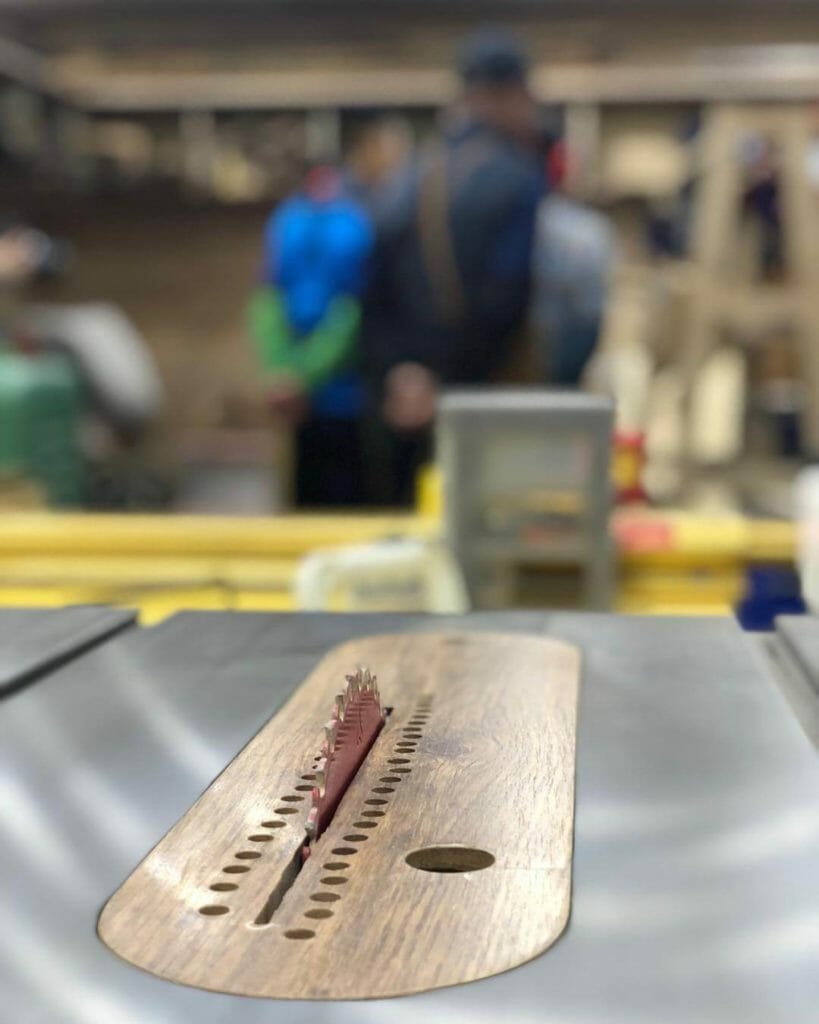
Track Saw Pros
Track Saw Cons
Table saws are more versatile for making smaller, repeated cuts in a short time frame. They also have more powerful motors, which you mount under your working table. Doing so allows the blade to move back and forth and control the cutting depth.
If you need to make several rip cuts or lots of identical pieces, table saws work best. Especially if you’re on a schedule, table saws make several equal cuts quickly.
Their hard-working motor works better for cutting thick pieces of heavy hardwoods and can go long periods without tiring out or getting overheated.
Table Saw Pros
Table Saw Cons
Track Saw vs Circular Saw
A track saw has a guide rail made from anti-slip material, minimizing the possibility of accidents and creating more precise cuts.
Track saws are hard to carry around since you have both the saw and its accompanying guide rail. They are still portable, though, since you don’t always mount them to your worktable.
However, they have measurement and precision features to help achieve the perfect cut on all pieces, along with anti-kickback safety measures. Miter cuts and angular cuts require careful precision, so a plunge cut track saw will help get the job done.
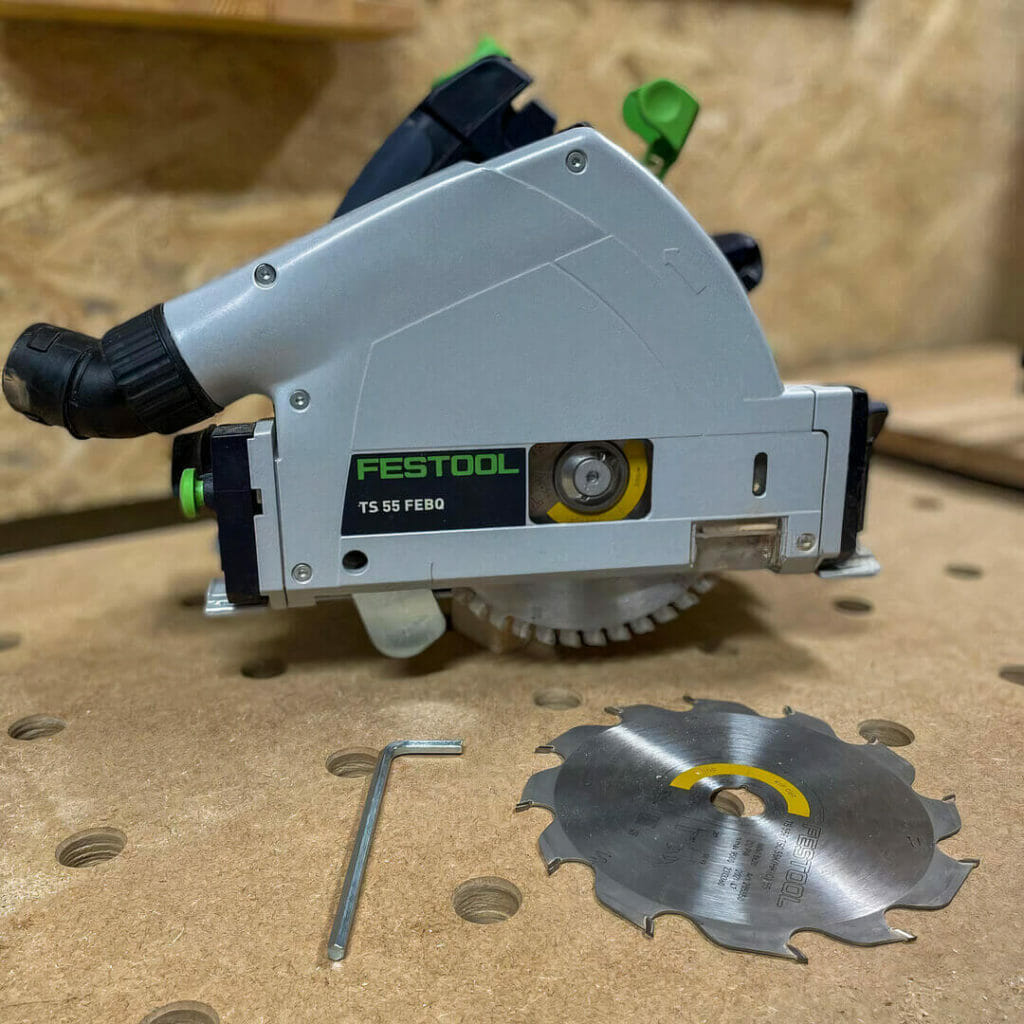
Track Saw Pros
Circular saws are the more common workshop power tools. Their circular blade allows you to make solid cuts in all kinds of materials. While a circular saw’s accuracy in cutting wood is not the best, it can also cut metal.
Circular saws come in many types. You’ll find corded track saws most often, but a cordless track saw may be a viable option. There are also hand-held and even table saws you can lock onto your work table.
You might even find a plunge circular saw somewhere. A plunge circular saw just means that the blade will plunge into the material you’re cutting. Circular saws are useful for intentional rough cuts or rip wounds.
The main difference between the two saws is their cutting capacity and precision. Both saws work with many kinds of materials, but a track saw might be the best option if you need something smoother.
Circular Saw Pros
Best Track Saw FAQ.
There are plenty of excellent track saws from Kreg and Festool. We still need to clear up some more things about how they work, what types are best, and what you can expect from your track saw.
What Is a Track Saw?
A track saw is precisely what it sounds like: a saw with a guide rail track that allows you to make better cuts in wood.
It is also called a “plunge saw” or “plunge-cut saw” since the saw plunges into the material for a thorough cut. Guiding the saw on a track allows for more accurate cuts, and you can pre-measure the cuts for better precision.
You can adjust the track so the saw will stop when it’s done cutting. Doing so reduces tear-out and splintering in the material and increases operator safety. You can also choose to use a cordless track saw or plug it into the wall.
How to Use a Track Saw
While a track saw is one of the most versatile and portable saws, there are a few things to remember before using one, especially if you’re new to woodworking.
Use the Right Blades and Take Care of Them
Most track saws work best with wooden materials. Cutting through steel, metal, or ceramics might damage even the best track saw, and it can be dangerous to the operator.
Using the right saw blades for your track saw is vital. Ensure they are sharp and the right size for your saw (the best size is a 160mm diameter and 20mm round arbore bore). The right size blade also saves you time and stress, cutting through materials easily.
Check your blades for damage before use. A dull or damaged blade will increase your work time, create rough cuts on your materials, and it might be unsafe for you. Luckily, making a blade change is easy with most models.
Adjust the Riving Knife and Depth of Cut
Keep an eye on your saw’s riving knife, which helps protect operators from blade kickback. Adjusting it before each use ensures proper safety and quality work. If you correctly align it with the blade, it’ll minimize the chance of accidents or injury.
Set your depth of cut properly too. Some materials are thicker than others, so you need to place your blade to cut through them. The optimal cutting depth is usually 1/8″, but it should not go so deep that it threatens the saw’s function.
Use a Guide Rail for Best Results
Hold the track firmly in place when the saw is in use. A track saw is a powerful tool, and you need to hold it down to prevent injury and ensure proper and precise cuts.
Even though the saw will stop at the set distance on a track, you still need to hold the power tool down to keep the cut straight and clean. Many track saws have handles to help you with this.
Never underestimate the usefulness of guide rails. You can use track saws without them, but guide rails help keep the saw on the set path and protect you from splinters. Guide rails clamp to your work, so having to hold the saw down is not as necessary.
Double Check Everything Before Each Use
Double-check everything before you turn the saw on, especially the current cutting path.
During blind plunge cuts, you cannot always see the route your blade will take. You should never run a blade when the cutting path is not clear. Unnecessary objects might damage the saw if you do not clear the blade path.
Be especially careful with variable-speed motors. While they can run as low as 2 000 rpm, they can run anywhere between 5 200 rpm and 5 500 rpm, so check your speed before each use.
Activate Your Saw Properly
To activate your track saw’s power, you need to press the plunge release and the power trigger together. For best results, connect the plunge release to extend the saw blade, and then press the power trigger before you release the plunge release.
Particularly if your saw has a soft start, let the saw reach its maximum speed before using it. Doing so lessens the chance of kickbacks and creates more precise cuts. Plus, with the saw going so fast, cutting material takes less time and will put less stress on the motor.
Protect Yourself From Injury
Even if you’re an expert saw user, you should still exercise safety precautions. Keep your hands and other objects away from the cutting path, and wear protective gear for your eyes and ears. When you’re not using the saw, put a blade guard over any exposed blades.
What Is a Track Saw Used For?
The most portable of all workshop saws, and among the most powerful, track saws work great for larger projects with larger material pieces. If you need to make longer cuts than what one guide rail allows, you can always connect more.
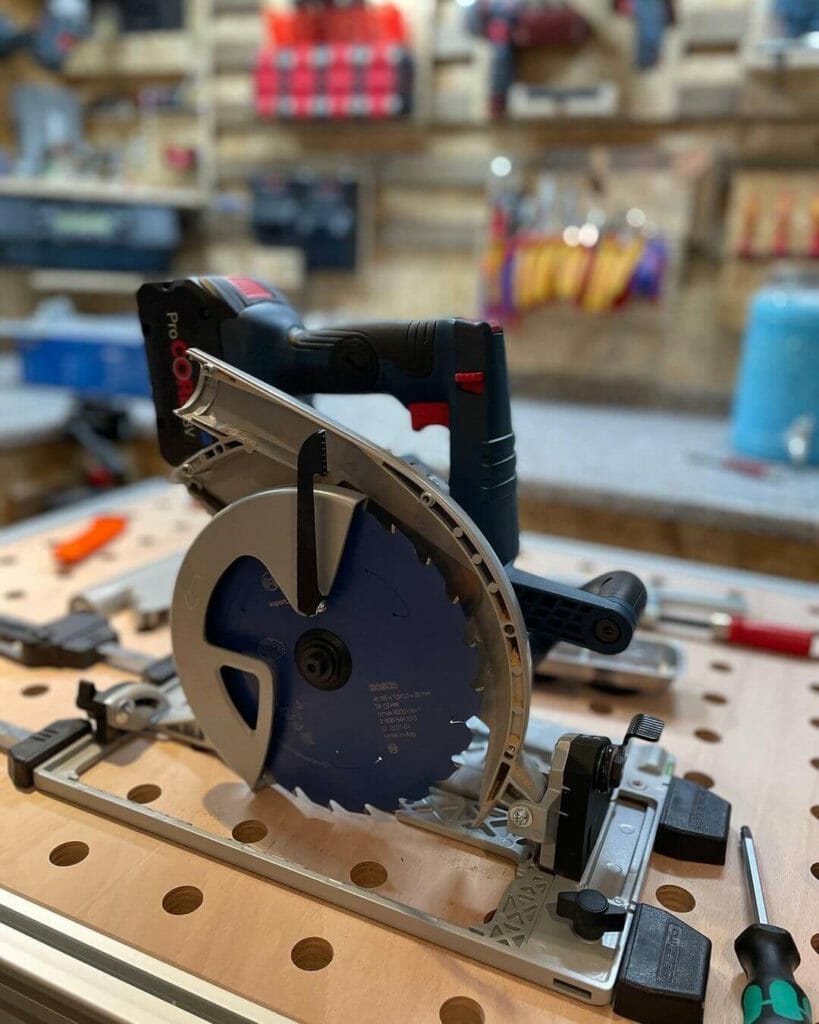
Plunge Cuts
Track saws have pivoting shoes so that they can make all kinds of cuts at different angles. They also make excellent plunge cuts, which you can make in the middle of the workpiece for electrical wires or sink fittings. Many of the above brands, like Makita, Festool, and Bosch, create great plunge cuts.
Remember that you must follow specific steps for plunge cuts since they require more care than bevel cuts or straight cuts.
Cutting Studs for Walls or Frame Structures
Using a track saw to cut studs for walls or frame structures works wonders too. A track saw can help you measure one piece of stock and then make exact duplicates. That way, you won’t have to measure and mark out each piece individually.
Cutting Drywall
Track saws are one of the best options for cutting drywall, too, since the material produces a lot of dust. Many track saws have dust ports that redirect the dust into a bag. A few models even have a hose that vacuums debris from the work surface as you go.
FINAL VERDICT
Although our list saw some of the best track saws from Bosch and Festool, we have just one track saw we can declare a real winner: the Makita SP6000J1.
We were just too impressed with its splinter-free precise cuts, produced with a powerful 12 amp motor.
Its variable speed dial and impressive depth of cut made it even more of a winner. Our Festool model was a good runner-up, but there can only be one winner here.
In Conclusion
We’ve looked at some excellent track saws from Festool and Makita and such, but it all comes back to what you want and need from a track saw.
What projects do you want to tackle, and which tools do you need for them?
You’ll need to define your needs to find the best track saw to suit your purpose. Whether you choose a Festool, a Kreg, or a Makita, there’s a track saw for you. We hope you have fun on your next woodworking project with one of the best.

